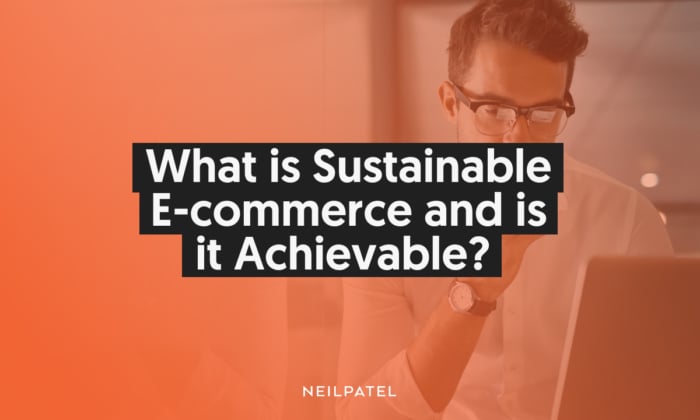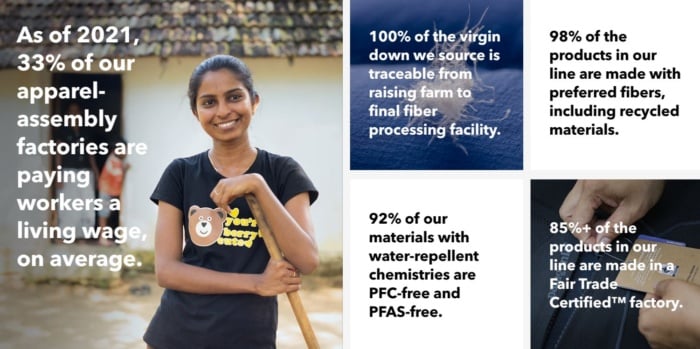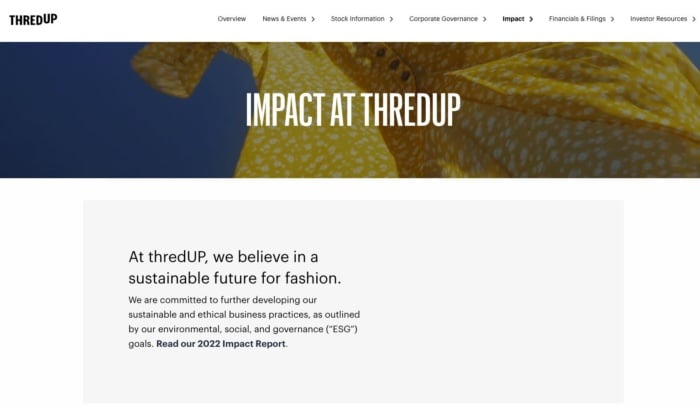
When you hear “sustainable e-commerce,” what comes to mind? Is it just a buzzword, or is there a deeper significance that could reshape how we do business online?
Sustainable e-commerce is more than a fancy term. It’s about integrating eco-friendly practices into the very heart of online business operations. From how products are sourced and packaged to the way they are marketed and delivered, sustainability touches every aspect.
But here’s the million-dollar question: Is achieving sustainable e-commerce just a lofty ideal, or is it genuinely attainable?
In this blog, I’ll dissect this concept, exploring how it benefits the environment and your business. So, whether you’re a digital marketer, an e-commerce entrepreneur, or just curious about this green revolution, you’re in the right place.
Key Takeaways
- With retail e-commerce sales growing, the environmental impact is huge, especially considering 3 billion trees are pulped to produce 241 million tons of shipping cartons.
- A substantial shift in consumer behavior is evident, with 73 percent of global consumers willing to change their consumption habits to reduce environmental impact and a growing trend towards purchasing eco-friendly products.
- Adopting sustainable practices is not only ethically sound but also financially beneficial. Businesses can experience cost savings, efficiency gains, and potential tax incentives, making sustainability a smart business strategy.
- Innovative technologies like AI for supply chain optimization, green hosting solutions, and blockchain for transparency are key drivers in achieving sustainable e-commerce and enhancing efficiency and eco-friendliness.
- Authentic and transparent communication about sustainability efforts is crucial. Building a strong green brand image resonates with eco-conscious consumers and is fundamental in gaining their trust and loyalty.
Let’s unlock the world of sustainable e-commerce together—understanding its significance, its benefits, and how you can practically apply it in your digital marketing strategies.
The Significance of Sustainable E-commerce
The convenience of online shopping has revolutionized the way we buy, but there’s a hidden environmental cost that we can’t ignore. When we talk about e-commerce, we often overlook its immense impact on our environment.
Shipping emissions are expected to increase by 6 million metric tons by 2030

E-commerce packaging is another major contributor to CO2 emissions. 3 billion trees are pulped to produce 241 million tons of shipping cartons annually. Additionally, out of the 86 million tons of plastic packaging produced globally each year, less than 14 percent gets recycled.
Sustainability in e-commerce ensures that our actions today don’t compromise the future. With climate change knocking on our doors, it’s crucial for businesses to step up and rethink their operations.
And it’s not just about businesses taking responsibility—consumers are already driving this change. They’re increasingly aware and demanding sustainable options. Over half of the consumers in the U.S. and U.K. prefer minimal packaging, and many are even willing to pay more for eco-friendly delivery options. That’s not just a trend—it’s a movement.
Benefits of Sustainable E-commerce
Stepping into sustainable e-commerce isn’t just good for the planet—it makes brilliant business sense too. Let’s dive into why.
Environmental Impact
The most visible benefit of sustainable e-commerce is its positive environmental impact. It’s about much more than reducing carbon footprints and minimizing waste, particularly in packaging. This approach resonates deeply with today’s eco-conscious consumers and is a crucial aspect of business strategy.
Consider Patagonia, a brand that’s synonymous with sustainable practices. Their achievements in sustainability are noteworthy: 33 percent of their apparel-assembly factories pay a living wage, 100 percent of their virgin down is traceably sourced, and a significant 92 percent of their materials are free from harmful PFCs and PFAS.
Additionally, 98 percent of their products are made with preferred fibers, including recycled materials, and over 85 percent are produced in Fair Trade Certified factories. These efforts highlight Patagonia’s commitment to reducing its environmental impact and setting a standard in the industry.

Source: Patagonia
The demand for sustainable products has seen a dramatic upswing, with a 71 percent increase in Google searches for such goods between 2016 and 2021. This trend underscores a growing consumer preference for brands that prioritize ecological preservation and resource conservation.
Incorporating sustainable practices into e-commerce operations is becoming essential for businesses looking to stay relevant and competitive. Brands like Patagonia demonstrate that sustainable e-commerce benefits the environment and meets consumers’ evolving expectations. The key question for e-commerce businesses now is how to integrate these practices effectively to meet the dual goals of environmental responsibility and consumer satisfaction.
Consumer Preferences and Brand Loyalty
As I’ve already mentioned above, sustainable practices are rapidly moving from a “nice-to-have” to a “must-have” in the eyes of consumers.
Here’s some food for thought:
- 73 percent of global consumers are ready to change their habits to reduce environmental impact.
- 72 percent are actively purchasing more eco-friendly products.
- Products marketed as sustainable contributed to 50 percent of the growth in consumer goods from 2013-2018.
- Millennials, in particular, are champions of this change, with 75 percent adapting their habits.
The bottom line? Sustainability is a key driver of customer loyalty and business growth. It’s about more than saving the planet—it’s about building a loyal customer base that values your commitment to the environment.
Cost Savings and Efficiency Gains
Going green saves you green. Reducing energy usage and waste doesn’t just feel good—it impacts your bottom line. Running factories and warehouses on renewable energy like solar or wind power can be more cost-effective. And think about this—electric delivery vehicles can slash fuel costs significantly. In fact, Estee Lauder aims to transition 100 percent of their global corporate fleet to electric vehicles by 2030.
McKinsey & Company reports that effective sustainability practices can influence operating profits by up to 60 percent. There’s a definite correlation between resource efficiency and financial performance.
Sustainable practices are also becoming a magnet for talent. According to a survey by the IBM Institute for Business Value (IBV), 71 percent of employees and job seekers find environmentally sustainable companies more attractive, and nearly half would accept lower salaries to work for such organizations.
Tax Incentives
One of the lesser-known but highly impactful benefits of adopting sustainable practices in e-commerce is the potential for tax incentives. Various countries worldwide are increasingly offering these incentives to encourage businesses to go green. Here’s how it works:
- Tax Credits and Deductions: In some regions, businesses that invest in renewable energy sources like solar or wind power, or those that implement energy-efficient practices, can qualify for tax credits or deductions. This means a direct reduction in the amount of tax they owe. For example, a company installing solar panels might receive a tax credit, effectively reducing the cost of their green investment.
- Reduced Tax Rates: Certain governments offer reduced tax rates for businesses that are committed to sustainable practices. This could be in the form of lower corporate tax rates for companies that meet specific environmental standards or utilize a certain percentage of renewable energy in their operations.
- Customs and Import Benefits: Some countries provide customs and import advantages for businesses that import eco-friendly technologies or materials. These benefits can include reduced import duties or expedited customs processes, making it more financially viable for businesses to access sustainable resources.
- Investment Grants and Subsidies: Beyond tax benefits, grants and subsidies are available for companies investing in sustainable technologies. These financial supports can offset the initial costs associated with transitioning to more eco-friendly operations.
- R&D Incentives: Companies that invest in research and development for sustainable technologies can also benefit from tax incentives. This encouragement of innovation in sustainability not only aids in developing new eco-friendly solutions but also makes it more financially appealing for businesses to invest in such research.
These tax incentives provide financial relief and signify a growing global commitment to environmental stewardship. They encourage businesses to make sustainability a core part of their strategy, knowing that it will benefit the planet and bring tangible financial rewards.
Sustainable Supply Chain Practices
In e-commerce, a green supply chain is essential for staying competitive and responsible. With nearly 40 percent of businesses struggling to meet their ESG (Environmental, Social, and Governance) targets and 60 percent lacking visibility into their supply chain’s impact, it’s clear that sustainability is a complex but critical challenge.
Consider the following strategies to establish a sustainable supply chain:
- Set goals for sustainability. These should be clear, specific, and measurable—like reducing carbon emissions by a certain percentage or cutting down on waste in packaging. Track and be transparent about your progress. Here is a great example of an in-depth supply chain policy from Illimity to use as inspiration.
- Map out your supply chain. Where is the waste being generated? Where are the energy inefficiencies? By analyzing and mapping out each step—from sourcing materials to delivering products—you can pinpoint areas for improvement.
- Implement an inventory management system. An effective inventory management system can prevent waste and financial loss by keeping track of your stock in real-time, predicting demand, and reducing the unnecessary surplus.
- Communicate expectations with suppliers. Ensuring they align with your values on critical issues like health and safety, fair labor practices, responsible energy use, and recycling is vital. The products you sell are only as sustainable as the processes used to create them.
Implementing Green Marketing Strategies
When your e-commerce business takes significant steps toward sustainability, it’s essential to broadcast these efforts effectively. Why? Because there’s growing consumer interest in sustainable brands, and tapping into this trend can set your business apart.
Effective green marketing isn’t just about touting your eco-friendly practices—it’s about weaving your brand’s commitment within its sustainability story. It’s about showing your customers that by choosing you, they’re making a choice that aligns with their values. Here’s how you can do it:
Communicating Sustainability to Consumers
In the journey toward sustainability, transparency is your most powerful tool. Customers today are keen to see your brand’s commitment to being green in action, not just in promises. To effectively communicate this, leverage every channel at your disposal—your website, social media, email newsletters, and product packaging.

Source: ThredUP
Take ThredUP, for example. They’ve made their mission towards sustainable fashion a central theme across all their platforms. On their website, social media, and newsletters, they consistently share their progress, challenges, and even the smaller steps they’re taking towards a more sustainable future in fashion. This approach of open communication not only builds trust but also forges a stronger connection with their customers. It’s a perfect illustration of how in green marketing, authenticity isn’t just preferred; it’s essential.
Building a Green Brand Image
Your brand image is a reflection of your values and what you stand for. When it comes to sustainability, it should be an intrinsic part of your brand’s identity, not just a sideline in your marketing strategy. This commitment needs to echo across all your branding elements and touchpoints.
It’s about more than just launching sustainable product lines or using eco-friendly packaging. Every action your brand takes should reinforce your image as a business that cares deeply about its customers and the planet. Aligning your brand with sustainability attracts customers who love your products and share your environmental values.
Sustainable E-commerce Technologies
Technology stands at the forefront of sustainability in the rapidly evolving world of e-commerce. From innovative software solutions to cutting-edge green infrastructure, these technologies are doing more than shaping the future of online commerce—they’re ensuring it’s a future that’s eco-friendly and sustainable.
Imagine AI-driven systems that can predict demand, reducing overproduction and waste. Companies like IBM leverage AI to optimize supply chains, leading to smarter and more sustainable inventory management. Or consider energy management software that intelligently controls energy use in warehouses, significantly cutting down on carbon emissions. These technological advancements are necessities for sustainable operations.
Green Hosting and Energy-Efficient Platforms
Let’s talk about the digital footprint. Traditional web hosting and e-commerce platforms are energy-hungry beasts. Enter green hosting solutions. Companies like GreenGeeks are leading the charge, powering their data centers with renewable energy and investing in wind energy projects.

Source: GreenGeeks
Similarly, energy-efficient e-commerce platforms are making headway. For example, Shopify’s commitment to operate on 100 percent renewable energy and its offsetting of delivery emissions make it a frontrunner in sustainable e-commerce.
Innovations in Sustainable E-commerce Technologies
In the world of e-commerce, sustainability is taking center stage, thanks to some groundbreaking technological innovations. Advanced analytics and AI are crucial in reshaping how online businesses manage their inventory. These tools provide precise inventory forecasting, which is essential in reducing overstock and dead inventory. This is a big deal because overstock ties up capital and contributes to waste, a key concern in sustainable e-commerce.
Transparency in supply chains is another area where technology is making a huge impact. Innovative tracking and verification systems allow consumers to trace the origin of products and validate their sustainability claims. This level of transparency is critical in building consumer trust and encouraging ethical production practices.

Source: IKEA YouTube
Augmented reality (AR) is also emerging as a game-changer, particularly in the retail sector. Retail giants like IKEA are using AR to let customers visualize products in their homes before purchasing. This technology significantly reduces the likelihood of returns, which is a major environmental concern in e-commerce due to additional shipping and handling. By minimizing returns, AR is helping reduce the carbon footprint associated with online shopping.
These technological advancements are reshaping the e-commerce industry into a more efficient and environmentally responsible space. For businesses, integrating these technologies means staying ahead in the competitive e-commerce market while contributing to a sustainable future.
Challenges and Solutions in Sustainable E-commerce
In the world of sustainable e-commerce, it’s not all smooth sailing. There are challenges, sure, but with every challenge comes a solution. Let’s dive into a few of them.
Greenwashing Risks
Challenge: Some companies get caught up in greenwashing, making misleading claims about their environmental efforts. Remember Volkswagen’s emission test cheating scandal? Or when Coca-Cola was named the world’s number one plastic polluter? These brands made big mistakes in sustainability and are working their way back up the ladder of trust.
Solution: Honesty is your best policy here. Back up your claims with solid evidence and consider independent verification for extra credibility. Be specific and use measurable data to support your claims. No fluff, just facts.
Overcoming Consumer Skepticism
Challenge: Thanks to greenwashing, 55 percent of consumers are skeptical about a brand’s sustainability claims and overall sustainable marketing efforts.
Solution: Education is key. Inform your consumers about your sustainability efforts with transparency. Don’t just talk about your products—show your commitment to sustainability over time. Use social media to engage in honest conversations with your customers.
Regulatory Compliance Challenges
Challenge: Staying compliant with environmental regulations can be a moving target, especially with variations across regions.
Solution: Keep yourself informed. Join industry associations for guidance and stay on top of local and international regulations. When in doubt, consult experts to ensure you’re on the right side of the law.
Technology and Green Marketing
Challenge: Keeping up with green technologies and the associated costs can be daunting.
Solution: Invest in R&D to stay abreast of eco-friendly technologies. Evaluate the long-term cost benefits, not just the upfront costs. Remember, sustainable practices often lead to cost savings down the line.
Future Trends
The future of green marketing is full of opportunities for businesses to flourish while positively impacting the planet.
- Technology Integration: We’re seeing a major push towards integrating technology into environmental marketing. With advancements in AI and data analytics, businesses can tap into real-time environmental data, allowing for precise tracking and reporting of sustainable efforts.
- Global Collaboration for Sustainability: Another big trend is the global collaboration for sustainability. Governments, businesses, and nonprofits are joining forces to tackle environmental challenges. These partnerships aim for widespread adoption of eco-friendly practices, and they’re gaining momentum fast.
- Streamlined Communication: As global collaboration grows, so does the need for effective communication. Tools like marketing automation and CRM software are becoming essential for smooth collaboration with worldwide partners, facilitating joint efforts in sustainable measures.
- Shift in Consumer Expectations: Consumer expectations are evolving. Today’s consumers are more environmentally conscious and expect companies to reflect these values. Businesses must adapt to meet these expectations, focusing on environmentally friendly products and responsible business practices.
FAQs
Sustainable e-commerce is the practice of conducting online business to minimize environmental impact and promote ecological balance. It’s important because it addresses the urgent need to reduce the carbon footprint and waste generated by online business activities while meeting consumers’ increasing demand for eco-friendly products and practices.
E-commerce businesses can integrate sustainability by adopting eco-friendly packaging, optimizing supply chains, using green hosting solutions, and implementing recycling programs. They can also invest in renewable energy, reduce energy consumption, and choose suppliers with sustainable practices.
Adopting sustainable practices in e-commerce leads to numerous benefits, including reduced environmental impact, improved brand reputation, increased customer loyalty, cost savings through efficient resource use, and alignment with global sustainability trends.
E-commerce companies can reduce their environmental impact in packaging and shipping by using recyclable or biodegradable materials, minimizing packaging size, optimizing shipping routes for fuel efficiency, and offering carbon-neutral shipping options. They can also encourage consumers to choose eco-friendly shipping options.
Yes, there are certifications and standards for sustainable e-commerce practices. These include LEED (Leadership in Energy and Environmental Design) certifications for green buildings, Fair Trade for ethical sourcing, and Energy Star for energy efficiency. There are also industry-specific guidelines and best practices that companies can follow to ensure their operations are environmentally responsible.
Conclusion
As we wrap up our exploration of sustainable e-commerce, it’s evident that this isn’t just a trend or a marketing gimmick. It’s a vital shift in how we approach e-commerce marketing and the customer experience in the digital age.
From embracing green marketing strategies to integrating sustainable technologies, every step towards sustainability is a step towards a better future—not just for our businesses but for our planet.
What change will you make today to steer your e-commerce business toward a more sustainable future?

